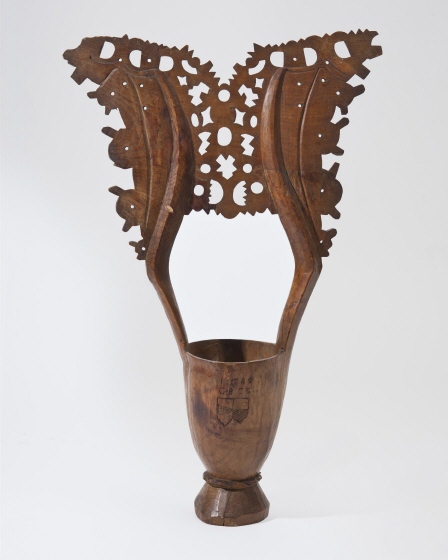Kronkåsa on:
[Wikipedia]
[Google]
[Amazon]
 A kronkåsa ( sv, crown cup, plural ''kronkåsor'') is a form of elaborate drinking cup that was used during the
A kronkåsa ( sv, crown cup, plural ''kronkåsor'') is a form of elaborate drinking cup that was used during the
 A kronkåsa ( sv, crown cup, plural ''kronkåsor'') is a form of elaborate drinking cup that was used during the
A kronkåsa ( sv, crown cup, plural ''kronkåsor'') is a form of elaborate drinking cup that was used during the Renaissance
The Renaissance ( , ) , from , with the same meanings. is a period in European history
The history of Europe is traditionally divided into four time periods: prehistoric Europe (prior to about 800 BC), classical antiquity (800 BC to AD ...
in Sweden.
Description
A kronkåsa is a drinking vessel where the handles are exaggeratedly long and elaborate, thus forming a kind of crown above the cup, hence the name. The crown cups made during the Renaissance were carved from a single root of spruce trees. Later copies from the 19th century were made using other types of wood. The decoration of the crown is likely derived from forms found in the woodwork details of imported late Gothic altarpieces. Many of the cups were painted bright red.History
Kronkåsor were used in Sweden during the Renaissance as a form of elaborate drinking vessel among theSwedish nobility
The Swedish nobility ( sv, Adeln eller Ridderskapet och Adeln) has historically been a legally and/or socially privileged class in Sweden, and part of the so-called ''frälse'' (a derivation from Old Swedish meaning ''free neck''). The archaic term ...
. Although little is known of their origin, it has been suggested that they reflect an old tradition of elaborately carved wooden drinking vessels popular in Northern and Eastern Europe
Eastern Europe is a subregion of the European continent. As a largely ambiguous term, it has a wide range of geopolitical, geographical, ethnic, cultural, and socio-economic connotations. The vast majority of the region is covered by Russia, whic ...
. The popularity of kronkåsor during the 16th century coincides with a breakthrough in the quality and popularity of wood carving as an art in general in Sweden. According to Olaus Magnus
Olaus Magnus (October 1490 – 1 August 1557) was a Swedish writer, cartographer, and Catholic ecclesiastic.
Biography
Olaus Magnus (a Latin translation of his birth name Olof Månsson) was born in Linköping in October 1490. Like his elder ...
, writing in his '' A Description of the Northern Peoples'' in 1555, kronkåsor were made in south-western Finland
Finland ( fi, Suomi ; sv, Finland ), officially the Republic of Finland (; ), is a Nordic country in Northern Europe. It shares land borders with Sweden to the northwest, Norway to the north, and Russia to the east, with the Gulf of B ...
(at the time part of the Swedish realm) and possibly in Västerbotten
Västerbotten (), known in English as West Bothnia or Westrobothnia, is a province (''landskap'') in the north of Sweden, bordering Ångermanland, Lapland, North Bothnia, and the Gulf of Bothnia. It is known for the cheese named after the p ...
. About 20 kronkåsor survive to this day, most of them preserved in museums. Many of them are intimately connected to the Bielke family. When the Swedish National Heritage Board was created in 1630, its objective was to preserve ancient monuments and cultural heritage, including kronkåsor.
Usage
Kronkåsor were probably used during festive occasions and seem to have been only used by members of the nobility.References
{{reflist Drinking culture Drinkware Swedish culture Renaissance art